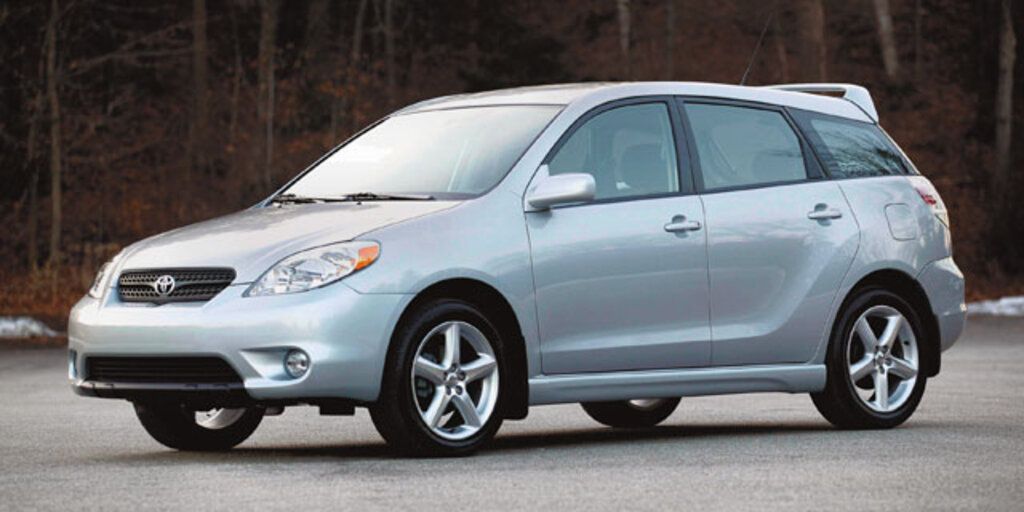Alternators are among the most essential yet often overlooked components in any car. Tasked with charging the battery and powering the electrical systems while the engine is running, this component plays a vital role in keeping your vehicle operational.
When it fails, it doesn’t just cause inconvenience—it can leave drivers stranded and facing repair bills that vary wildly depending on the make and model of the vehicle.
Some alternators cost just a couple hundred dollars, while others can run upwards of $2,000, especially in high-performance, luxury, or hybrid-electric models.
This drastic price difference stems from several factors: the complexity of the alternator, its integration with other systems, the accessibility for installation, and the vehicle’s brand positioning.
For budget-conscious buyers or DIY enthusiasts, knowing which cars have affordable alternator replacements can be a huge advantage.
On the flip side, understanding which vehicles come with costly alternator replacements may influence ownership decisions, especially for those who prefer to avoid high service costs.
This article will explore five vehicles with alternators that typically cost around $200 to replace and five that come with eye-watering $2,000 price tags.
Whether you’re looking to save or simply stay informed, this breakdown will illuminate a major—but often hidden—aspect of car ownership.
Also Read: 5 Cars That Rarely See the Mechanic And 5 That Practically Live There
5 Cars With Alternators That Cost $200
Not every vehicle requires deep pockets when it comes to routine repairs. In fact, there are still plenty of cars on the market—especially in the economy and compact segments—where alternator replacements remain refreshingly affordable.
In these vehicles, alternators are usually priced around $200, including parts, and can often be replaced quickly, sometimes in under an hour. This is a welcome relief for DIYers and budget-minded drivers alike.
There are a few key reasons why alternators in these cars are so economical. First, simplicity in design plays a major role. These vehicles often feature conventional internal combustion engines with minimal electronic complexity and few integrated electrical modules.
Their alternators are typically standalone units with basic mounting and belt-drive setups, making them easy to access and remove. Additionally, the wide availability of aftermarket parts keeps prices competitive, with remanufactured units readily found at local auto parts stores or online retailers.
Furthermore, cars in this category tend to be mass-produced and supported by a strong network of third-party service options. This reduces labor rates and ensures that mechanics are familiar with the job, driving down overall replacement costs even further.
In this section, we’ll highlight five vehicles known for alternator replacements that cost around $200 or less, focusing on models that are not only mechanically friendly but also broadly accessible in terms of ownership.
These are vehicles that strike a balance between reliability, cost-efficiency, and long-term affordability. If you’re someone who values low maintenance expenses, especially in the electrical system, these five models should be on your radar.
Let’s explore the cars that won’t break the bank when your charging system decides to call it quits.
1. 2008–2013 Toyota Corolla (1.8L 4-Cylinder)
The Toyota Corolla has long been hailed as a champion of affordable and dependable transportation, and that reputation extends to its maintenance and repair costs—particularly when it comes to alternator replacement.
The 2008 to 2013 generation, equipped with the 1.8-liter four-cylinder engine (engine code 2ZR-FE), is a prime example of practical design and service-friendly engineering.
One of the standout features of this Corolla’s engine layout is how easy it is to access under the hood. The alternator is mounted at the front of the engine bay, in plain view, and is driven by a simple serpentine belt system.
Replacing the alternator on this model typically involves disconnecting the battery, loosening the tensioner, removing a couple of bolts, and unplugging a wire harness—tasks that even a moderately skilled DIYer can tackle in about an hour.
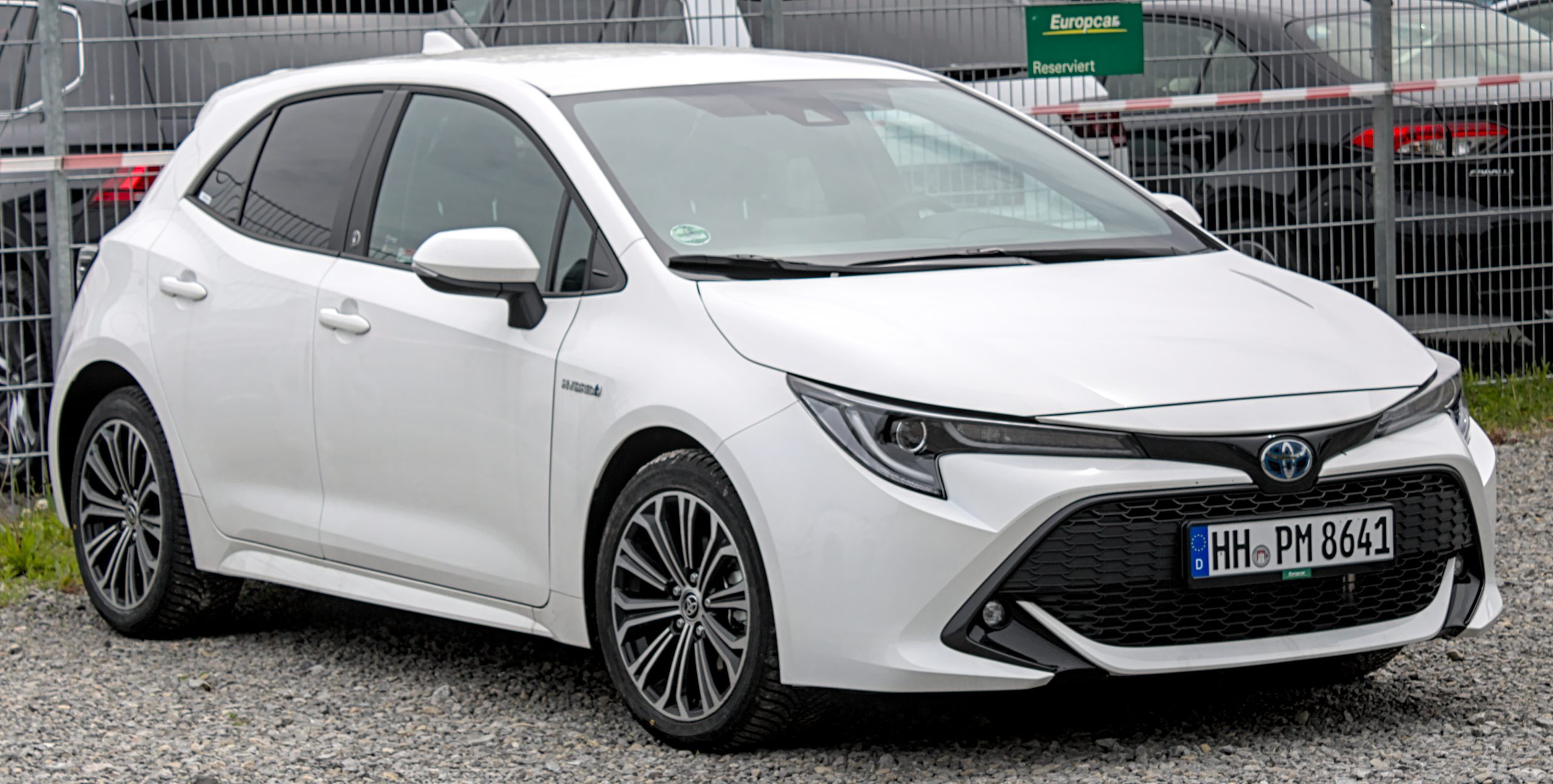
Aftermarket parts are widely available for this model, and many remanufactured or brand-new alternators can be found for under $150, with premium OEM-style units costing slightly more but still well under the $200 mark. Labor costs are also low due to the straightforward nature of the job, often totaling $250 or less all-in when done professionally.
The cost-effectiveness of alternator replacement on this Corolla adds to its long-standing appeal. It’s a vehicle that was built with ease of maintenance in mind, a trait that benefits owners even more as the car ages.
Whether you’re driving it to work, using it for rideshare, or passing it down to a new driver in the family, the Corolla keeps ownership costs predictable.
For anyone prioritizing low long-term repair bills, especially on essential components like the alternator, the 2008–2013 Toyota Corolla continues to be one of the smartest choices in the compact sedan segment.
2. 2006–2011 Honda Civic (R18A1 1.8L 4-Cylinder)
The eighth-generation Honda Civic, produced from 2006 to 2011 and powered by the R18A1 1.8-liter four-cylinder engine, is another top pick for affordable alternator replacement. Known for its bulletproof reliability and massive aftermarket support, this Civic is as easy on the wallet during repairs as it is dependable on the road.
One of the reasons this model remains so popular with mechanics and DIYers is its relatively straightforward engine bay layout.
The alternator is mounted high and to the side of the engine, making it visible and accessible without needing to remove multiple engine components. This is a rarity in today’s crowded engine bays and contributes directly to reduced labor times and service complexity.
Parts availability is another major plus. With millions of units sold and a long list of compatible aftermarket brands, you can find brand-new or remanufactured alternators in the $120 to $180 range.
Even Honda-branded units can sometimes be sourced affordably. Labor costs are modest, and many independent shops can complete the job for $60 to $100, resulting in a total repair bill often under $250.
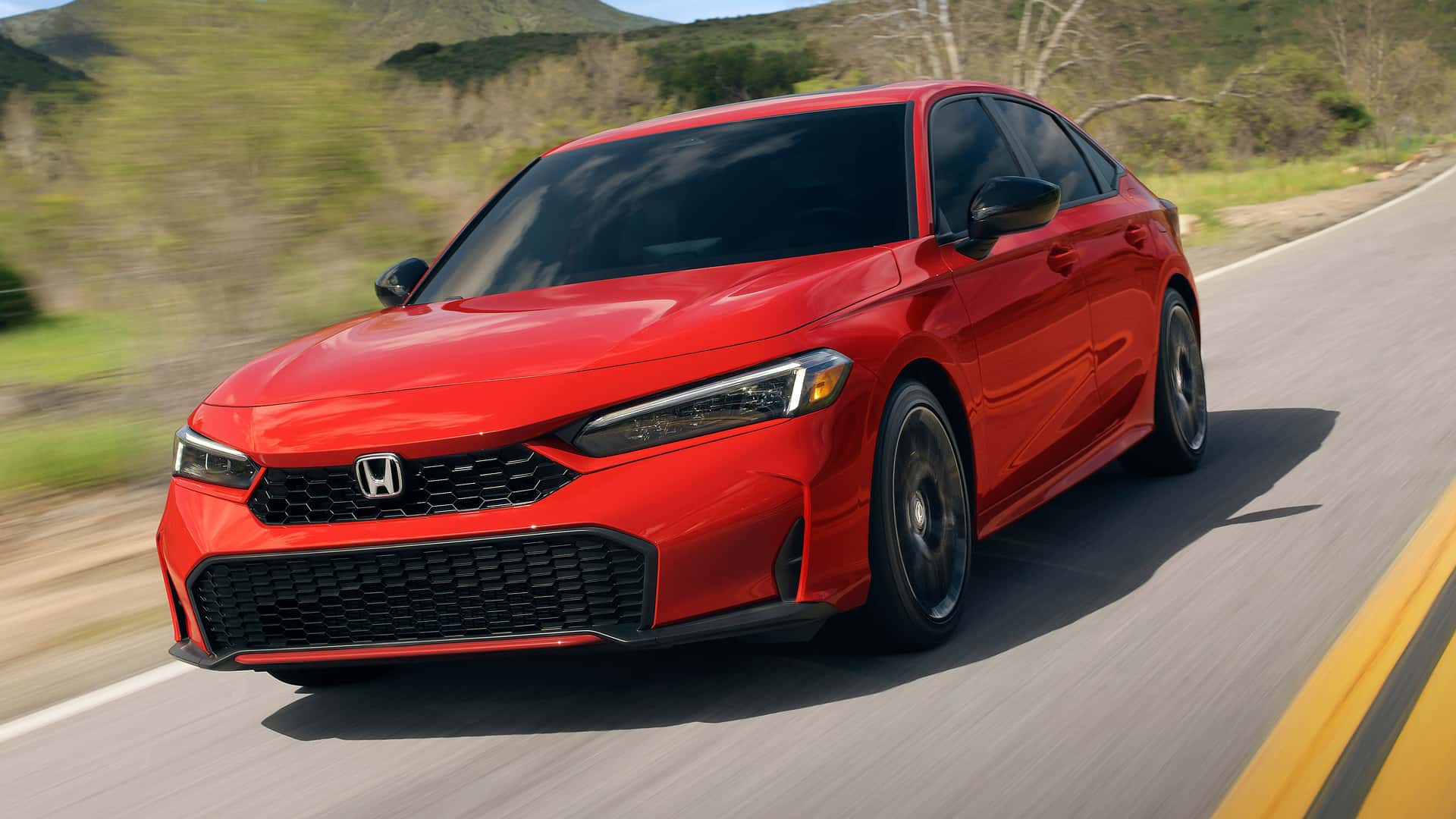
This Civic also stands out for its high compatibility with DIY repair culture. Thanks to clear service manuals, online tutorials, and a wealth of community forums, owners with basic mechanical knowledge can replace the alternator themselves in about an hour.
The task requires minimal tools and doesn’t involve navigating around delicate engine components.
Whether you’re maintaining an aging commuter car or relying on your Civic as a fuel-efficient daily driver, knowing that the alternator won’t set you back hundreds—or thousands—of dollars offers peace of mind.
The combination of smart engineering, part affordability, and reliability makes the 2006–2011 Honda Civic one of the most economical vehicles for alternator service on the road today.
3. 2012–2017 Hyundai Accent (1.6L Gamma Engine)
The 2012–2017 Hyundai Accent, powered by the 1.6-liter Gamma four-cylinder engine, is a standout in the subcompact class—not just for its fuel efficiency and budget-friendly sticker price, but also for how easy and inexpensive it is to maintain.
When it comes to alternator replacement, this generation of Accent is among the most cost-effective vehicles on the market.
One of the biggest advantages of the Accent’s engine bay is its open and simple design. The alternator is mounted at the front of the engine and is easily accessible from above without having to remove complex intake manifolds or support braces.
Even better, the alternator is attached with basic bolts and a belt tensioner, allowing for a fast removal and replacement process.
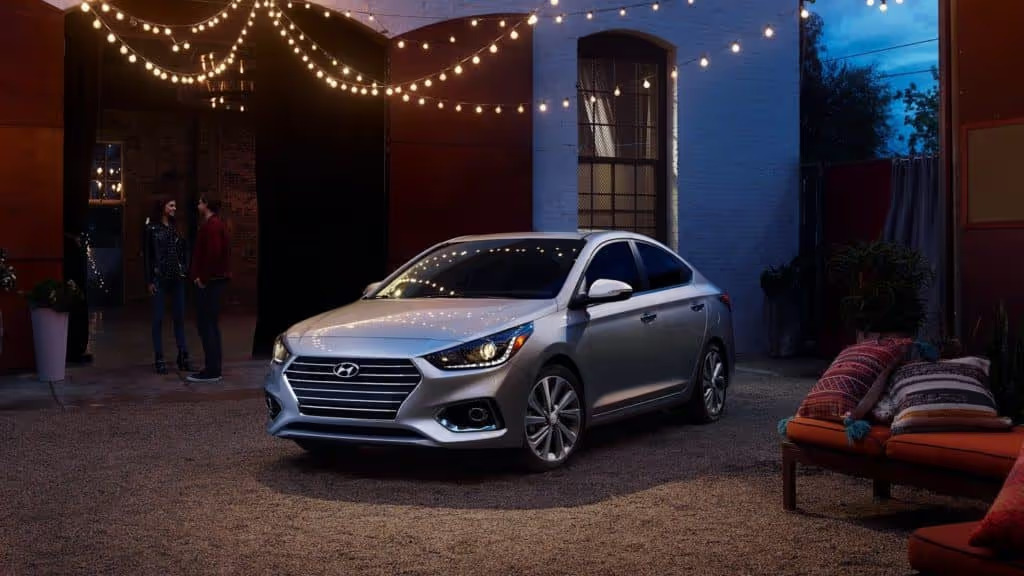
Many experienced mechanics can complete the job in under an hour, and even novice DIYers have had success with this task thanks to numerous video guides and minimal tool requirements.
Parts availability is another bonus. A new alternator for the 2012–2017 Accent typically runs between $100 and $160, with many reliable aftermarket brands offering direct-fit options. Labor rates for professional replacement are typically low, and full-service shops can perform the job for under $250 total.
Why this matters: the Accent was designed from the ground up as an affordable, global car. Hyundai focused on keeping manufacturing costs low, which also benefited owners in terms of ongoing maintenance.
The straightforward engineering means fewer headaches—and fewer dollars—when components like the alternator eventually wear out.
For anyone looking for a simple commuter vehicle with minimal repair surprises, the Hyundai Accent is a wise choice.
When an alternator replacement comes due, you’ll appreciate the quick turnaround and budget-friendly pricing that help keep the total cost of ownership impressively low.
4. 2009–2014 Ford F-150 (3.7L and 5.0L Engines)
The Ford F-150 is America’s best-selling vehicle for a reason: it blends versatility, power, and practicality in a package that appeals to everyone from contractors to suburban families.
While many might assume full-size trucks come with high maintenance costs, certain models—especially those equipped with the 3.7L V6 or 5.0L V8 engines from the 2009–2014 range—offer surprisingly low costs for common repairs like alternator replacements.
These two engine options feature relatively spacious engine bays and a straightforward accessory belt layout. The alternator is mounted high on the front of the engine, which means minimal disassembly is required to access and remove it.
This design choice is not only appreciated by mechanics but also by truck owners who enjoy turning wrenches themselves. With a few hand tools, the alternator can be replaced in about 30 to 60 minutes.
Another cost-saving aspect is the wide availability of replacement units. Due to the F-150’s immense popularity, the aftermarket is flooded with remanufactured and new alternators for these engines.

Prices typically range from $130 to $180, with OEM-style replacements available through parts stores and online retailers. Professional installation rarely exceeds $250 to $275 in total.
This generation of F-150 strikes a nice balance between modern technology and old-school serviceability. While later models introduced more complex turbocharged engines and tighter engine bays, the 2009–2014 models remain friendly to owners who value simple and affordable repairs.
For truck owners who demand durability but also want to avoid costly maintenance surprises, these F-150 models deliver. Whether used for work or recreation, knowing that replacing a failed alternator won’t require deep pockets is a big bonus in the long-term ownership experience.
5. 2003–2008 Toyota Matrix (1.8L 1ZZ-FE Engine)
The 2003–2008 Toyota Matrix, particularly those powered by the 1.8-liter 1ZZ-FE engine, wraps up this list as one of the most economical vehicles when it comes to alternator replacement.
Based on the same platform as the Toyota Corolla and Pontiac Vibe, the Matrix was built for practicality, and its ease of maintenance is a major highlight.
This generation of the Matrix features a transverse-mounted four-cylinder engine that’s not buried beneath plastic covers or wedged into a compact bay.
The alternator is located near the top of the engine, mounted on the passenger side, and is very easy to spot and reach. With just a few hand tools and minimal disassembly—often just the removal of the serpentine belt and a couple of bolts—the alternator can be removed and replaced in under an hour.
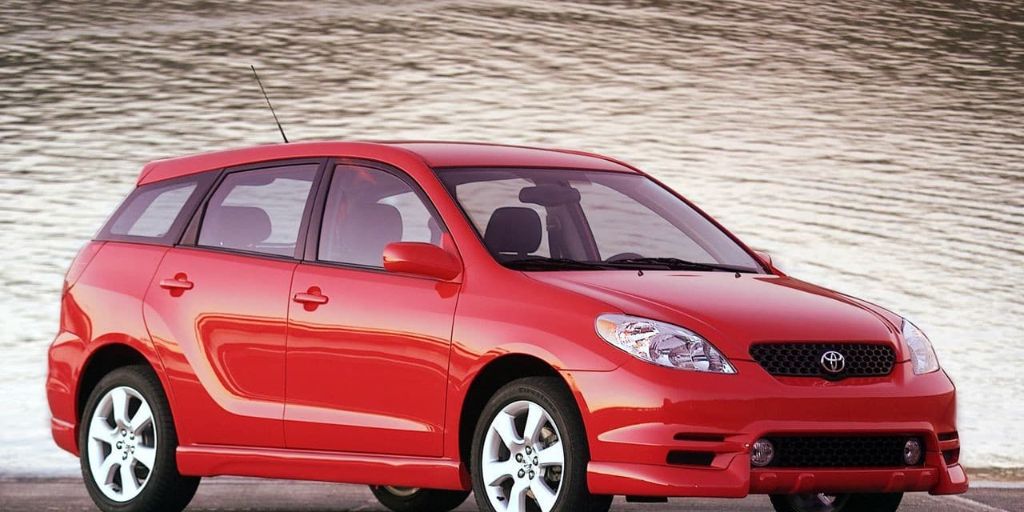
Replacement costs are equally budget-friendly. Aftermarket and remanufactured alternators for this Matrix are commonly priced between $100 and $160, with premium options still coming in well below the $200 mark. Labor costs at independent shops are modest due to the minimal time involved, keeping the total service bill comfortably around $200 to $250.
What makes the Matrix especially appealing to DIY owners is its shared parts compatibility. Because it uses the same engine and alternator as the Corolla and some GM-branded Vibe models, parts are widely available, and instructions for replacement are easy to find online.
This vehicle was designed with simplicity in mind—both in its utility and its mechanical layout. Owners who want a hatchback with SUV-like cargo capacity and low repair costs continue to gravitate toward this model.
When it comes to alternator replacements, the Toyota Matrix proves that smart design can equal big savings at the repair shop or in your own garage.
5 That Cost $2000
While many drivers assume alternator replacement is a relatively routine and affordable repair, the truth is that some vehicles buck that expectation—hard.
In fact, there are several high-end or tightly engineered models where replacing a failed alternator can end up costing well over $1,500 and in some cases push dangerously close to the $2,000 mark.
These are not just luxury supercars or ultra-rare exotics—some of the most surprisingly expensive alternator swaps come from popular European brands or complex hybrids that many owners don’t expect to carry such steep repair costs.
This section explores five vehicles where alternator replacement can be a wallet-crushing ordeal. Whether it’s due to labor-intensive removal procedures, the need to drop the engine, or the use of proprietary, integrated alternator-generator modules, the reasons vary—but the result is the same: you’ll need to brace for impact when the repair quote comes in.
Even parts alone can run over $1,000 in some cases, and limited accessibility can turn a relatively simple job into a labor marathon, driving up costs.
This is why we’re shining a spotlight on these five models. The aim is to inform prospective buyers and current owners alike—especially those considering used luxury cars or hybrid vehicles—about the real-world repair costs that don’t always show up in glossy brochures.
If you’re planning to keep one of these vehicles beyond the warranty period, or you’re shopping for a used model and want to budget for future maintenance, these examples offer a sobering reality check.
High-performance, high-tech vehicles often come with hidden upkeep expenses, and alternator replacement is one of those deceptively simple jobs that can go from standard to shocking. Here’s a breakdown of five such cars where alternator repairs are anything but affordable.
1. 2010–2016 BMW 7 Series (F01/F02 – 750i, 750Li with N63 Twin-Turbo V8)
When you hear “BMW 7 Series,” luxury, performance, and cutting-edge tech come to mind—but so should eye-watering repair costs, especially when it comes to alternator replacements in the N63-equipped models.
The 750i and 750Li with the 4.4-liter twin-turbocharged V8 (engine code N63) are notoriously expensive to maintain, and alternator failure is a prime example of why.
First, the alternator itself is not a standard, easily swappable unit. In the N63 engine, the alternator is deeply buried beneath layers of engine components—including the intake manifold, turbo piping, and in some cases, active cooling ducts.
Reaching the alternator can require six to eight hours of labor for an experienced technician. Some shops may even need to lower the engine cradle slightly just to create enough working space.
On top of the labor intensity, the alternator itself is not cheap. BMW’s proprietary components often come with a hefty price tag, and the N63 alternator is no exception.
OEM units frequently cost $900 to $1,200, depending on the supplier and whether it’s new or remanufactured. Add in the labor costs, which often exceed $700 to $900, and total repair bills commonly fall between $1,800 and $2,200.
What’s more troubling is that the N63 engine is known for a host of other reliability issues—timing chain wear, oil consumption, valve stem seal failures—which makes the alternator expense feel like just one piece of a costly puzzle.

Owners and used car shoppers are often drawn to the 750i’s plush interiors and impressive power, only to be blindsided when major service costs arrive well outside warranty coverage.
If you’re considering a used BMW 7 Series from this era, budget accordingly. This is not a car where DIY fixes or budget repairs are feasible, and when the alternator fails, it fails big—both in complexity and cost.
2. 2006–2012 Mercedes-Benz S550 (W221 Chassis, M273 V8 Engine)
The W221 Mercedes-Benz S-Class, especially the S550 model with the M273 5.5-liter V8, represents German engineering at its most luxurious—and most complex.
While its refined ride, powerful engine, and opulent interior wowed buyers when new, ownership can become financially painful once major components like the alternator need replacing. This is a car where a simple charging system failure can lead to a repair bill nearing $2,000.
At first glance, the alternator location in the M273 engine doesn’t seem overly buried. But the complexity of surrounding components, including the multi-layered cooling system, tight engine bay packaging, and elaborate electronics, means even basic repairs can turn into a time-consuming process.
The alternator often requires 3–5 hours of labor, and that’s if the technician is familiar with this exact engine layout.
Adding to the cost is the alternator itself. Genuine Mercedes-Benz alternators for the W221 S550 can cost anywhere between $700 and $1,100, depending on whether it’s sourced new or rebuilt.
The OEM part includes integrated control modules, which are designed to interface with the car’s sensitive electrical systems and onboard diagnostics.
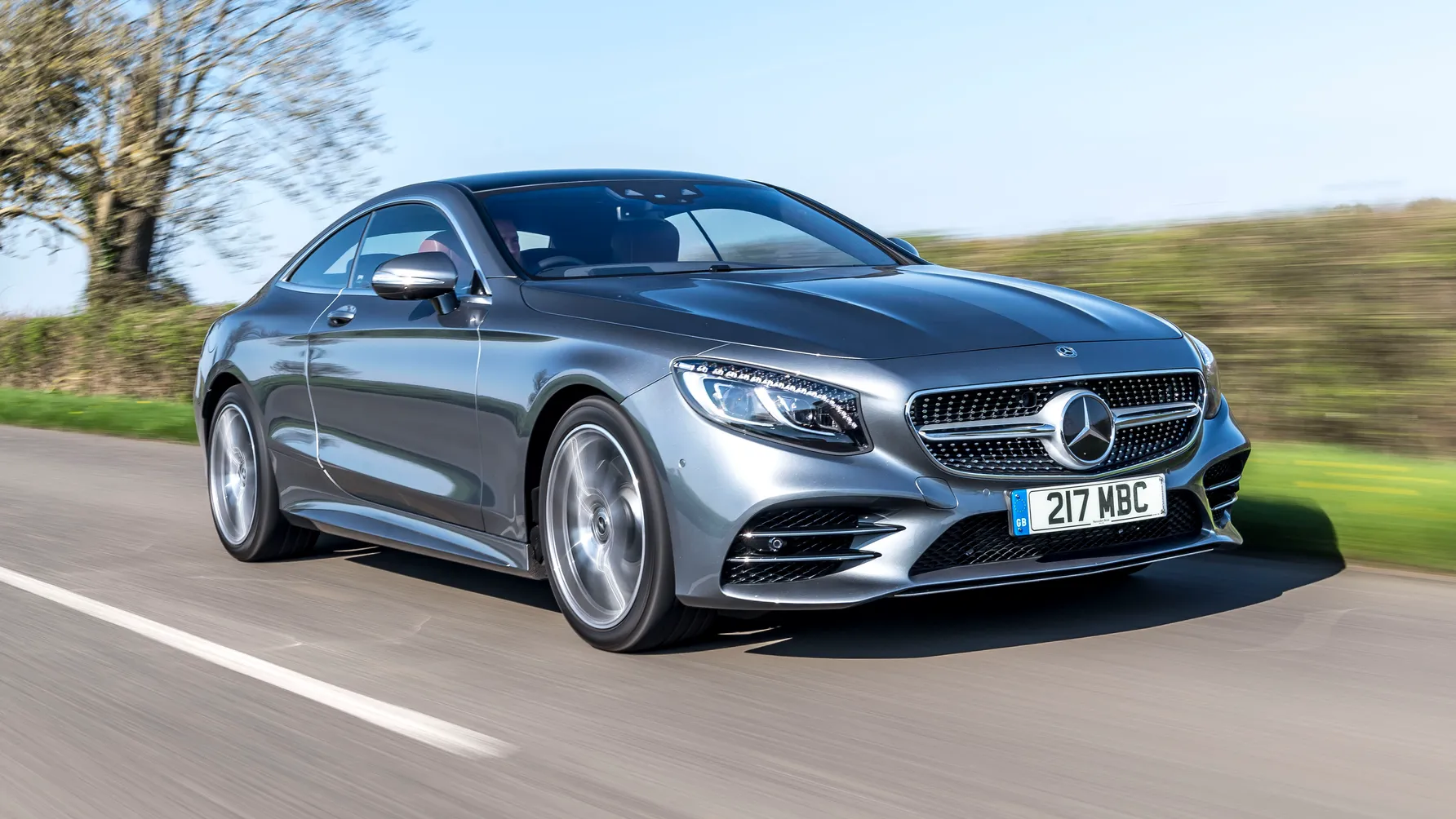
Non-OEM replacements often result in malfunctioning electronics or warning lights, which is why many shops insist on factory parts.
Once labor is factored in—averaging $800 to $1,000 at a dealership or certified European repair shop—your total cost lands between $1,600 and $2,100. If any sensors or wiring need to be replaced or recalibrated during the install, that number can creep even higher.
This is a classic case of luxury coming at a price. The W221 S-Class was a technological showcase when it debuted, but time has shown that repairs like alternator replacements are anything but routine.
If you’re driving or buying an S550, plan for premium maintenance across the board—including the charging system.
3. 2010–2015 Porsche Panamera (4.8L V8 Models – Panamera S, 4S, Turbo)
The Porsche Panamera blends luxury and sports car performance in a four-door sedan, appealing to those who want practicality without sacrificing speed. However, owning a Panamera—especially the V8-powered versions—means accepting high maintenance costs across the board.
One of the most painful surprises is the cost of replacing the alternator, which can exceed $2,000 once parts and labor are accounted for.
The problem isn’t just the premium pricing of Porsche-branded parts. It’s the layout of the 4.8-liter V8 engine in the Panamera, which is incredibly compact and tightly packaged under the hood.
The alternator is deeply recessed and surrounded by the intake manifold, cooling lines, and air ducting. To access it, technicians must remove numerous components, which adds hours to the repair time. Labor alone often totals 7 to 9 hours, depending on shop efficiency.
Porsche’s OEM alternators cost between $850 and $1,200, and using aftermarket parts is generally discouraged due to compatibility issues with Porsche’s sensitive charging and electrical systems.
Even rebuilt units must meet high standards, or else electronic gremlins like battery warnings, power loss, or limp mode can follow.
Labor rates at Porsche-certified or European specialty shops run between $150 and $200 per hour, so it’s not unusual for the total bill to land in the $1,900 to $2,300 range.
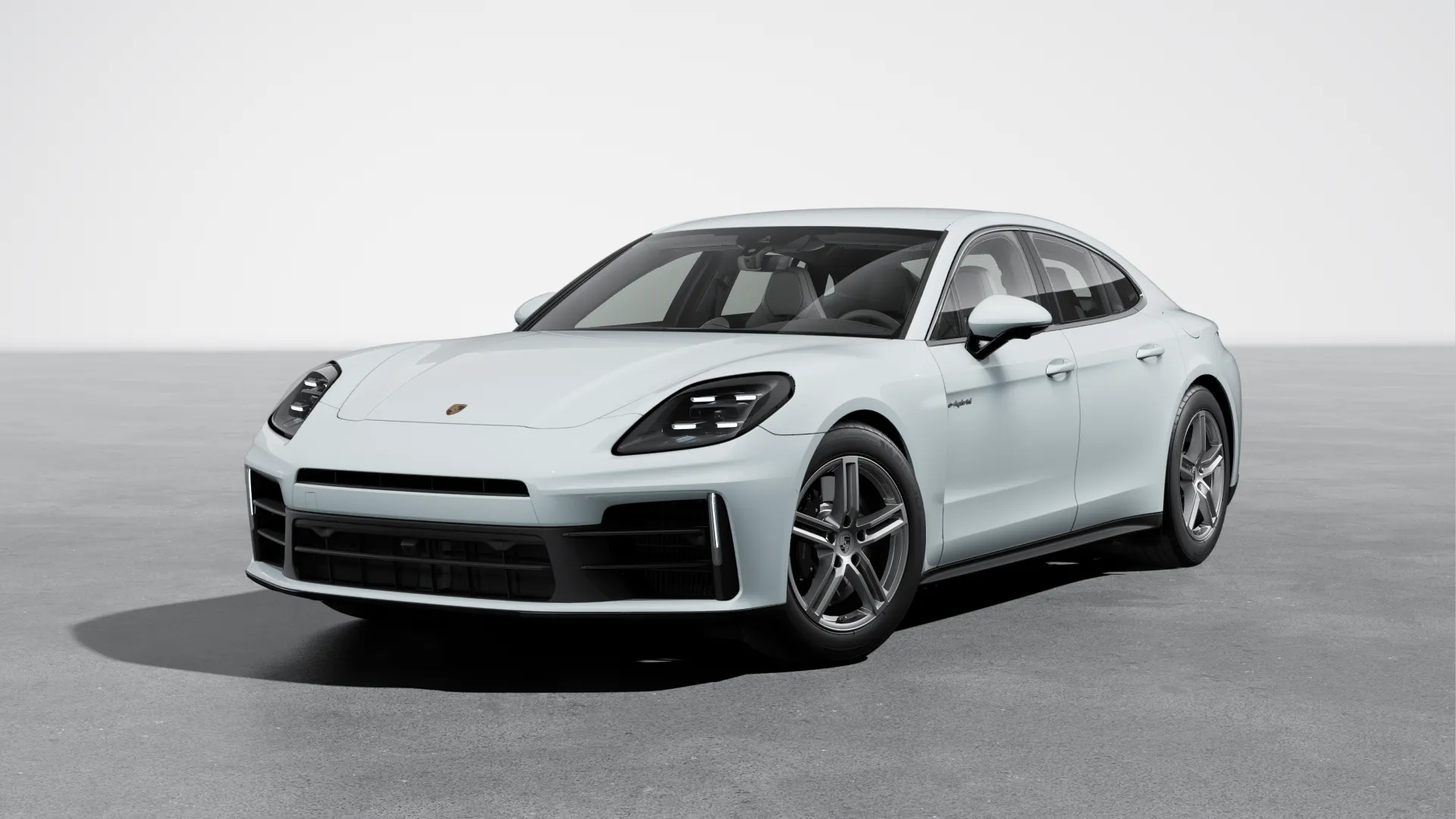
If any additional parts (like serpentine belts, pulleys, or sensors) need replacing, that pushes the cost higher still.
The Panamera may offer world-class handling and road presence, but this is a textbook example of how performance engineering can complicate basic maintenance.
Alternator replacement becomes a premium service, requiring specialized knowledge, special tools, and high-end parts.
Owners love the car’s driving experience—but when the alternator goes out, few are prepared for the financial shock that follows.
4. 2014–2020 Land Rover Range Rover Sport (3.0L Supercharged V6 and 5.0L V8)
The Range Rover Sport is a vehicle that exudes premium appeal—stylish, commanding, and capable both on and off the road. However, beneath the opulent design and cutting-edge features lies a costly maintenance reality, especially when it comes to the alternator.
In both the 3.0L supercharged V6 and 5.0L V8 models, alternator replacements can easily stretch into the $1,800 to $2,200 range, sometimes higher.
The culprit? Overengineering and poor accessibility. The engine bay of the Range Rover Sport is extremely tight, and the alternator is wedged under layers of intake manifolds, cooling hoses, and tightly routed electronics.

Replacing it often involves removing the supercharger or upper intake manifold, especially in the V8 model, which significantly drives up labor time—commonly 7 to 10 hours in a well-equipped shop.
Furthermore, the alternator itself isn’t cheap. OEM units cost between $900 and $1,100, and Land Rover’s finicky electrical system doesn’t always respond well to third-party replacements.
Shops frequently recommend factory parts to avoid dashboard errors, charging malfunctions, or even limp mode activation. This is particularly common on models with advanced start/stop systems or regenerative charging.
Add dealership labor rates (often $180 to $220 per hour), and even a basic alternator replacement quickly becomes a high-cost event.
What’s worse is that alternator failures are not rare in these vehicles—especially on higher-mileage examples or those frequently exposed to heat or heavy electrical loads from accessory use.
Range Rover ownership always comes with the expectation of high running costs, but many buyers don’t anticipate that something as seemingly minor as an alternator could rival the cost of a transmission service in other vehicles.
If you’re buying one used or approaching the 80,000–100,000 mile mark, be prepared for this repair to show up—and to cost accordingly.
5. 2007–2013 Audi Q7 4.2L V8 (FSI Engine)
The Audi Q7 equipped with the 4.2-liter FSI V8 may deliver solid performance and a luxurious cabin, but it hides one of the more complicated and costly alternator replacement procedures among luxury SUVs.
For owners of this generation, an alternator failure can turn into a $2,000+ repair, primarily due to the labor-intensive access required and the high cost of Audi-specific parts.
At the root of the issue is engine packaging. The 4.2L FSI V8 is a wide, tightly packed engine crammed into a relatively compact engine bay.
Accessing the alternator typically requires removal of the front clip—including the front bumper, grille, radiator support, and in some cases, moving the radiator and condenser.
This “service position” approach is common in Audi and VW platforms, where forward-access components are designed to slide out for service.
This complexity adds a significant amount of labor—often 7 to 9 hours, even for an experienced Audi technician. With labor rates hovering between $160 and $200 per hour, the labor alone can cost $1,200 to $1,500.
The alternator itself, which is a proprietary high-output Audi part, typically runs $700 to $900 for a new OEM unit. Aftermarket or remanufactured options often result in compatibility issues with the vehicle’s sensitive electronics and charging system.
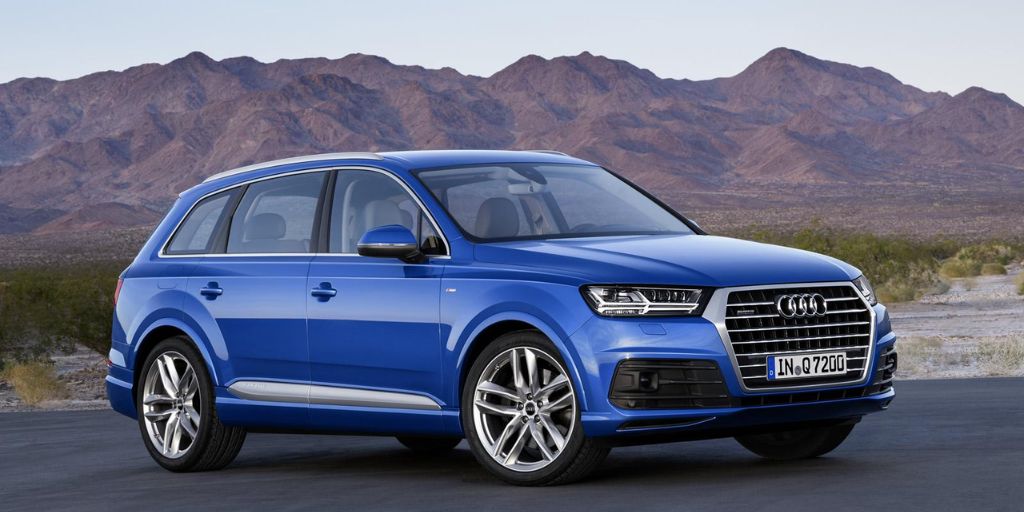
To make matters worse, the Q7 4.2L is notorious for excessive heat generation and oil leaks, which can shorten alternator lifespan. Some owners even report needing a second replacement within a few years, compounding the cost.
This model is a cautionary tale: while the Audi Q7 looks like a bargain on the used market, it hides complex engineering under the hood that turns basic repairs into major expenses. Alternator replacement is one of the clearest examples of this design tradeoff.
Alternators are rarely top-of-mind when shopping for a car, but they should be. As this guide has revealed, the cost of replacing this essential component can vary dramatically—from under $200 in some budget-friendly vehicles to well over $2,000 in luxury or high-performance models.
The difference often boils down to a combination of parts pricing, labor complexity, and vehicle design philosophy.
On the affordable end of the spectrum, models like the Honda Civic, Toyota Corolla, and Ford Ranger offer a refreshingly simple approach. Their alternators are not only inexpensive to source but also easy to access, resulting in minimal labor charges.
These vehicles were engineered with long-term serviceability in mind. That doesn’t just reduce maintenance costs—it also provides peace of mind for owners who plan to keep their vehicles for the long haul.
Whether you’re a DIY enthusiast or someone relying on a local shop, these cars make alternator replacements a non-event.
In contrast, luxury vehicles such as the Porsche Panamera, Mercedes-Benz S550, and Audi Q7 highlight how design complexity and premium branding can dramatically inflate repair bills. In many of these cases, alternators are buried beneath layers of intake manifolds, engine covers, and electronics, requiring hours of disassembly.
Labor, specialized tools, and OEM parts all add up to an eye-watering final invoice. Even minor repairs on these vehicles often become major undertakings.
This comparison isn’t just about dollars—it’s about expectations. High-end vehicles deliver performance, comfort, and technology, but they demand high maintenance in return. Budget-oriented models may lack prestige, but they shine when it comes to manageable upkeep and long-term ownership costs.
For prospective buyers, the takeaway is clear: don’t just ask how much a car costs to buy—ask how much it costs to maintain. A vehicle’s alternator replacement cost is a microcosm of its overall service profile.
Knowing the difference could mean the difference between a stress-free ownership experience and an expensive lesson in overengineering. Choose wisely, and your wallet will thank you.
Also Read: 5 Cars With Easily Accessible Spark Plugs And 5 That Take Hours To Change

